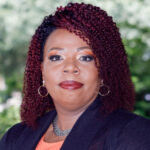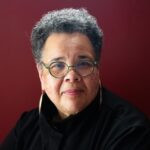Comparative Approaches to Religion
Syllabi - Topic: Comparative Approaches to Religion - 44 results
Select an item by clicking its checkboxA 2010 course by Jim Watts at Syracuse University explores "the various forms and functions of scriptures, primarily in Judaism, Christianity and Islam."
A 2014 course taught by Taylor Halverson at Indiana University examines the Abraham stories of the Hebrew Bible and the "emergence of Judaism and its use of Abraham to create religious identity" and how Christianity and Islam also look to Abraham as a "guiding figure in religious development."
A 2009 course by Andrew Aghapour at the College of Charleston "designed to provide a brief introduction to major religious traditions, including Hinduism, Confucianism, Daosim, Judaism, Christianity, and Islam."
A 2012 course by Dan Hinman-Smith at North Island College is "an introduction to the world's major religions, with an emphasis upon those of the Abrahamic tradition: Judaism, Christianity and Islam."
A course by Thomas Peterson at Alfred University offers " a fundamental understanding of the general nature of religion and of various religious traditions."
A 1999 course by Daniel Breslauer at the University of Kansas introduces "Judaism, Christianity, and Islam."
A 2002 course by Andrew Fort at Texas Christian University "attempts to understand the nature of religion by looking at some foundational ideas, texts, and figures in a variety of religious traditions."
A 2003 course by Amir Hussain at California State University, Northridge "is an introduction to the academic study of religion and of world religions, and to the religious traditions of Hinduism, Buddhism, Confucianism, Taoism, Judaism, Christianity and Islam," primal religions will also be considered.
A 2013 course by Kelley Rowan at Florida International University "explores the worldâs various religious traditions and the individualâs personal experience within their chosen religion . . . [as well as] various practices, rituals, and symbols of the religions."
A 2018 course by Harold Morales surveys "the dynamic and influential world religions of Hinduism, Buddhism, Judaism, Christianity, and Islam."
A 2000 course by Diana Eck at Harvard University serves as "an introduction to five of the world's religious traditions -- the Hindu, Buddhist, Jewish, Christian and Muslim traditions" with a focus on "twentieth century adherents of each tradition."
A course by Timothy Dobe at Grinnell College "offers a basic introduction to the beliefs and practices of each tradition and emphasizes the interactions, blendings, coexistence and competition of Asian religions as they occur in these dynamic contexts."
A 2009 course by Ellen Posman at Baldwin Wallace College examines "the beliefs about death and the afterlife from a variety of religious and cultural perspectives."
A 1998 course by Jeffrey Carlson at DePaul University explores Paul Tillich's "analysis of religion," Christianity, and Buddhism.
A 2013 course by Stuart Squires at Brescia University "surveys five different religionsâHinduism, Buddhism, Judaism, Christianity, and Islam" with attention to their similarities and differences and special focus on how they respond to the problem of suffering.
A course by Christopher Johnson "introduces students to a number of ways to approach the academic study of religion along with seven major religious traditions (Islam, Christianity, Confucianism, Hinduism, Buddhism, Judaism, and Daoism)."
A 2013 course by David Hackett at the University of Florida about the "many meanings of the sacred journey through outer and inner pilgrimages."
A 2002 course by Darren Middleton at Texas Christian University aims to "examine and assess the major beliefs and practices of five world faiths [Hinduism, Judaism, Buddhism, Christianity, and Islam] through a careful, critical study of selected world fiction."
A 2007 course by Peter McCourt at Virginia Commonwealth University offers a "critical survey of ethical concepts and issues in the thought and practice of major religious traditions."
A 2006 course by Nora Rubel at Connecticut College "is a methodological inquiry into American food traditions as elements of personal and communal religious identity."
A course by Miriam Dean-Otting at Kenyon College examines "the phenomenon of sainthood in a variety of religious traditions and sources."
A 2002 course by Jeffrey Carlson at DePaul University explores "significant elements of religion, especially symbol, doctrine, experience, and systems of cosmic, social and individual order, as they are manifested in Christianity and Judaism, with some attention as well to Islam, Buddhism and Hinduism."
A 2016 course by Lauren Osborne at Whitman College "takes a comparative thematic approach to reading across the three scriptures of the Abrahamic traditions."
A 2006 course by Adam Porter at Illinois College introduces "students to the three religious traditions that trace their heritage to Abraham: Judaism, Christianity, and Islam."
A 1999 course by Dale Cannon at Western Oregon University examines "the nature and role of ["the way of devotion"] . . . In a variety of religious traditions."
A 2012 course by Mark Unno at the University of Oregon takes a comparative approach to "religious and philosophical thought" of "selected Asian and Western thinkers" on "conception of the self, with a special focus on the dark side of the self . . . including sin in Christianity, karmic evil and delusion in Buddhism, disharmony in Taoism, and suffering in psychology."
A 2014 course by Joseph Adler at Kenyon College about the "various human phenomena that we call 'religious" and "the world's major religious traditions."
A 1998 course by Jim Dalton at Siena College examines "religious experiences and their expressions within a comparative, cross-cultural and interdisciplinary context."
A 2002 course by Tim Lubin at Washington and Lee University "looks as how deities, cults, ideas, and practices spread from one place to another as part of a growing empire, a network of holy men, or a circuit of traders."
A 2011 course by Wakoh Shannon Hickey at Alfred University details key features of selected religious traditions and how they understand assorted topics.
A course by Gisela Webb at Seton Hall University surveys "Indian, Chinese, and Abrahamic religious traditions, focusing on 1) their conceptions of ultimacy, 2) their conceptions of human nature, 3) their conceptions of spiritual transformation . . . (and) how these religious concerns are expressed in literature and the arts."
A 2009 course by John Huddleston at the College of Charleston on "pivotal scholarly issues . . . surrounding the founding figures, and origins generally, of at least . . . Buddhism, Christianity, and Islam."
A 2002 course by Franz Metcalf at California State University-Los Angeles "looks at how religions wrestle with the basic human realities of growing up, being an adult, and facing suffering, aging, and dying." The religions of ancient India and the Lakota nation receive special attention.
A 1999 course by Michael Fuller at St. Louis Community College examines "the nature and function of religion in human experience and culture, and an introduction to the history, content, and present status of selected world religions, such as Traditional African religions, Traditional Native American religions, Judaism, Christianity, Islam, and Buddhism."
A 2012 course by Frank Burch Brown at Christian Theological Seminary explores "the features and histories of several religions that have had a major impact on human life and that Christians encounter today."
A 2013 course by Jack Hawley at Columbia University "explores the creation, maintenance, and performance of the dominant rubric in the field of Religious Studies--the concept 'world religions'"
A 2017 course by Dan Capper at the University of Southern Mississippi "is a basic introduction to the variety of the worldâs religions as well as methods for studying them. . . . In rapid survey we will discuss the nature of religion; indigenous religions; and the religions of Hinduism, Buddhism, Judaism, and Islam."
A 2011 course by Daniel Alvarez at Florida International University "is an introduction to the study of religion. It will analyze various elements common to world religions and their expressions. In addition, it will examine the search for the transcendent and its implications at both the personal and the social level."
A 2010 course by Kenneth Atkinson at the University of Northern Iowa introduces "the academic study of religion and the worldâs major religions. . . . not only study the good side of religion, but we will also explore together the origins of contemporary religious violence in order to help you understand the important role that faith continues to play in world conflicts."
A 2007 course by Catherine Wessinger at Loyola University New Orleans explores "religious responses to disaster in the context of diverse faiths, with special attention paid to the 2005 Katrina and Rita disaster in New Orleans."
A 2008 course by Catherine Wessinger at Loyola University New Orleans aims to "understand the ways women's roles in society and religious beliefs are interrelated and affect one another . . . through the historical study of some of the major religions of the world."
A 2017 course by Jessica Starling examines "acts of self-discipline in a variety of cultural contexts, including Eastern (Jain, Hindu, Buddhist), Western (Stoic, Christian mystic), and modern secular (eco-activism, fasting diets, and extreme exercise regimes)" and through this "various understandings of the self, the body, desire, liberation and virtue."
A 2019 course by Peter Gottschalk at Wesleyan University considers religion "as a phenomenon . . . the meaning of 'sacredness' & 'the sacred' and question their comparative use" in various religious traditions.
A 2017 course by Jill DeTemple at Southern Methodist University provides "an introduction to a wide variety of religious traditions, communities and practices within the context of globalization" through modern methods in the field of the study of religion.

